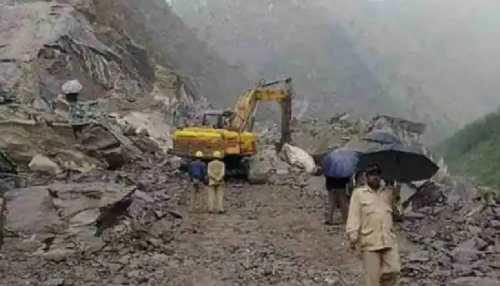- News>
- India
`Climate change, frequent earthquakes`: Himachal Pradesh sits on shaky ground; Are hydropower projects posing a threat to hill state?

The ground is sinking in several villages and towns of Himachal Pradesh`s Chamba and Kinnaur, a wake-up call for authorities as the robust forecasting system is a miss in the state.
Highlights
- Two back-to-back earthquakes hit Himachal Pradesh
- Hills of Himachal Pradesh are more prone to natural disasters like flash floods, cloudbursts, and landslides
- Mega hydropower projects are responsible for increasing the magnitude of the natural calamity
Kullu: Himachal Pradesh is going through turbulent times as two back-to-back earthquakes hit the state. Climate change is clearly taking a toll on the state as one of a medium intensity measuring 3.2 magnitudes on the Richter scale, on early Saturday rocked Himachal Pradesh. The hills of Himachal Pradesh, especially in the Kullu, Shimla, and Kinnaur districts, are more prone to natural disasters like flash floods, cloudbursts, and landslides. Official data show more than 1,500 people have been killed in flash floods in the state in the past 20 years. Besides the construction of mega hydropower projects, roads and large-scale unregulated mining are generating mountains of debris, responsible for increasing the magnitude of the natural calamity.
Indiscriminate drilling of the hills for constructing tunnels is forcing rural communities, mainly in fragile and eco-sensitive zones of Chamba, Kinnaur, and Lahaul-Spiti districts, to raise clamour against upcoming hydropower stations with their houses developing cracks and natural water resources disappearing.
Also read: Himachal Pradesh covered under snow blanket, IMD predicts more snowfall in next 48 hours
According to Himdhara, a state-based environment action group, the sheer negligence is evident at two levels -- firstly, the failure in ensuring compliance with environmental and safety norms by hydropower project authorities and the government, and secondly, the negligence towards the very impacts of unregulated hydropower development.
The 180 megawatts (MW) Bajoli Holi hydropower project in Chamba has been facing anger from the tribal Gaddi community as they fear the project is posing threat to their houses and fields owing to cracks and seepage in private and public land.
Local NGOs and green activists are also demanding that international financial institutions must be held accountable for their financing of disastrous hydropower projects in the Himalayas.
Several shortcomings surfaced during the crisis -- man-made or natural -- admit government officials. An official, requesting anonymity said, “In case of disaster or natural calamity coordination among state and Central agencies involved in relief and rescue operations is almost a miss.”
"No nodal officer is appointed at the state level to coordinate and monitor the operations," he remarked. Also, there is no mechanism for reaching out to the affected people in the shortest possible time and no round-the-clock dedicated helpline service to provide information regarding post-disaster actions.
"The state has no special chopper to handle emergencies. Only the chief ministers' official chopper is deployed for airlifting victims," added the official. State Disaster Management Department Director Sudesh Kumar Mokhta said that the state is prepared to handle any exigency relating to landslides.
When asked about the state`s preparedness and the need for an updated disaster plan in the wake of the sinking town of Joshimath in neighbouring Himalayan state Uttarakhand, he replied: "We don`t foresee any exigency like Joshimath in this (Himachal Pradesh) state." But the question is: Like Uttarakhand, Himachal Pradesh has also been undergoing unplanned construction of road networks and hydropower projects.
The ground is sinking in several villages and towns of Himachal Pradesh`s Chamba and Kinnaur, a wake-up call for authorities as the robust forecasting system is a miss in the state. A devastating earthquake in 1905 severely damaged property in the Kangra region, including St. John`s Church where many British officials were buried and claimed over 20,000 lives.
The frightening reality of a performance audit in 2017 on disaster management, with a specific focus on earthquake and fire, conducted by the CAG said 90 percent of buildings, mainly houses, in rural areas of the state do not follow safe construction rules.
In Shimla town, 83 percent out of a sample of 300 selected buildings were highly vulnerable if there was a major earthquake. However, the construction of buildings and houses in rural areas (89 percent of total houses) is not regulated by any law.
This is a wake-up call for authorities as the seismic sensitivity of the state is high. Seven out of 12 districts have over 25 percent of their area falling in seismic zone V (very high damage risk). The remaining parts fall in seismic zone IV (high damage risk).
(With inputs from IANS)
